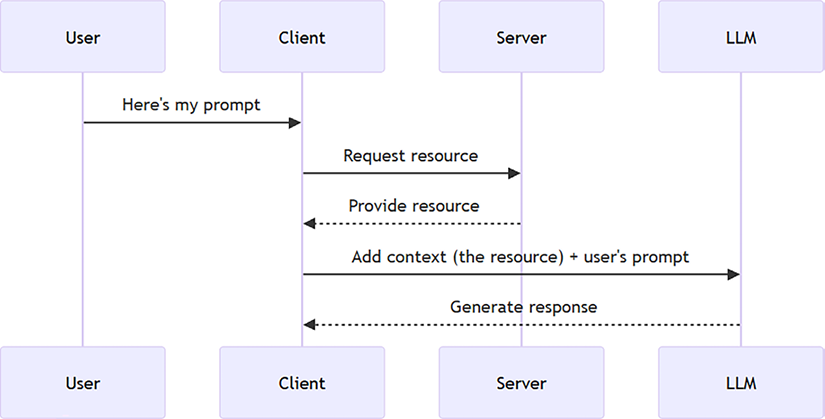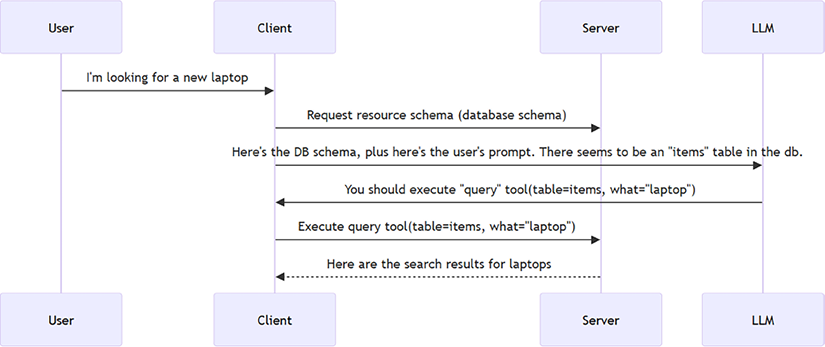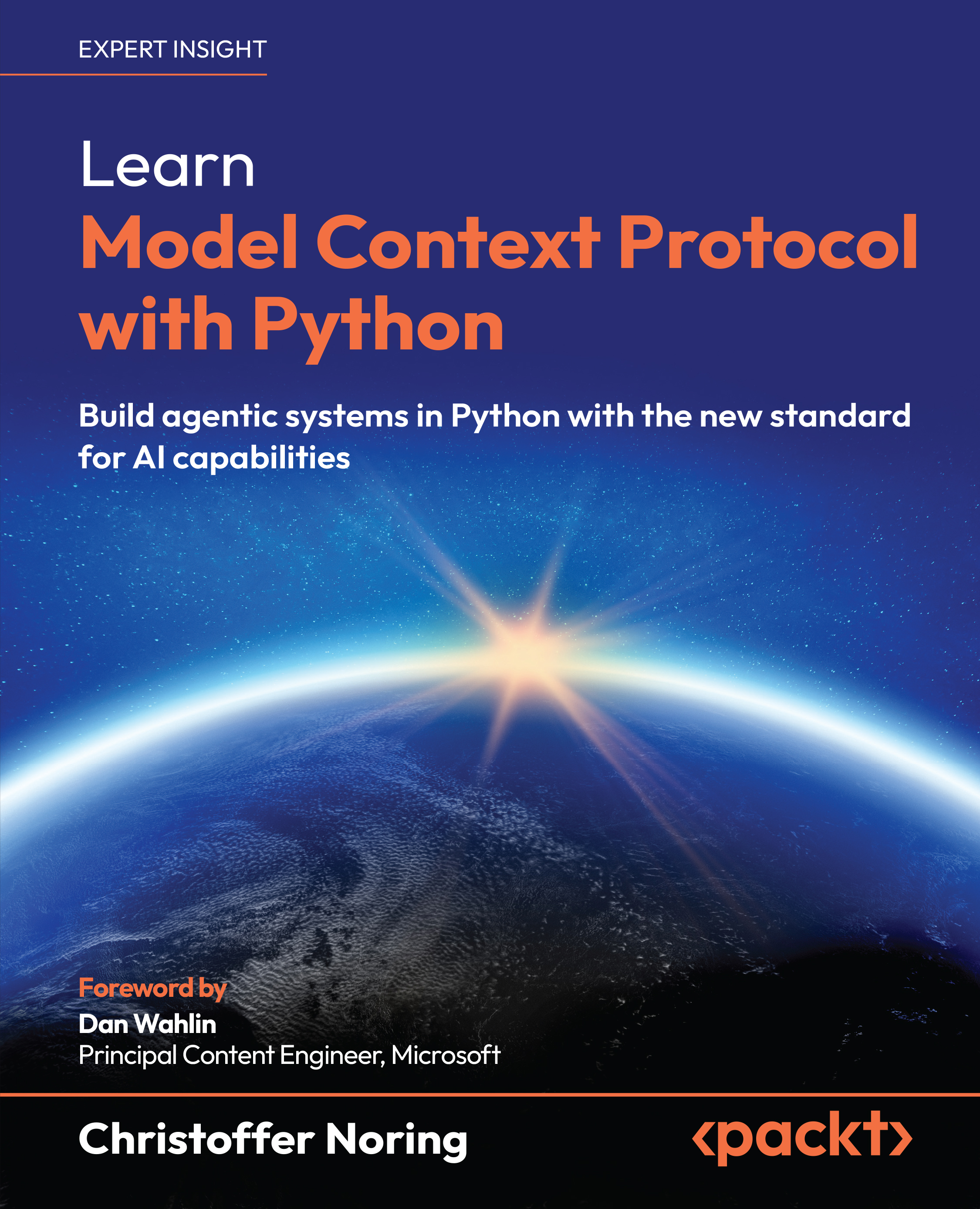Concepts
Let’s take a look at the core concepts (features, if you will) that the server can offer.
Resources
These are the data and context that the server can provide to the client. The way MCP is meant to be used is by the client having an LLM when they communicate with the server. Resources in this use case serve as context that could be added to the LLM at the time of the prompt. Imagine the following scenario playing out:

Figure 3.1 – Resources scenario
In this scenario, the context ensures that the end user gets a better result as the server’s context is paired with the user’s prompt, like a simplified retrieval-augmented generation (RAG) pattern. That is, you pair the user’s prompt with your data to get a better response.
A specific example implementing this way of thinking could be where the user asks for products like so:
Prompt
User: I'm looking for a new laptop

Figure 3.2 – Example...

































































